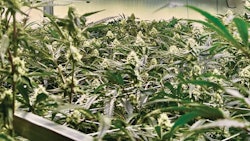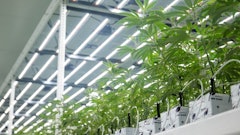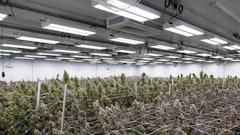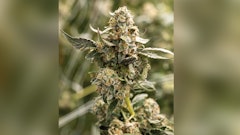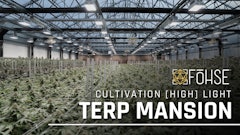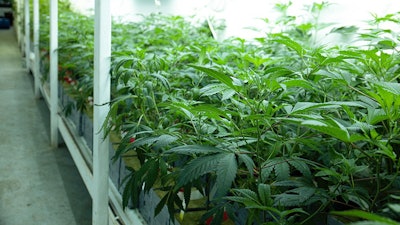
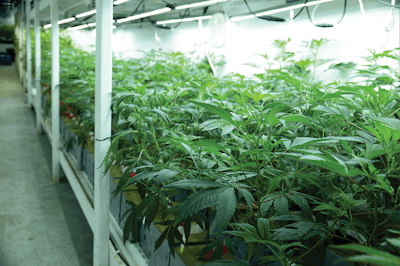
Most cannabis businesses consider profitability a top priority, but they face industry-specific challenges that make incorporating sustainability measures that could reduce costs and, in turn, increase profits, challenging. Conventional capital-raising channels are largely unavailable to cannabis businesses due to its federally illegal status, making investment dollars scarce for those working to get capital-intensive cultivation operations up and running. Timelines for launch are often determined by grueling state mandates, minimizing operators’ capacity to plan for the long-term. Cannabis lenders often charge a premium for what they view as relatively riskier investments, which encourages operators to put dollars into equipment and staff that can produce results as quickly as possible, with the lowest up-front cost. This leaves higher-priced sustainable options on the drawing room table.
Despite the seemingly insurmountable hurdles, there are sustainable options cannabis companies can take advantage of that can lead to more lucrative operations.
1. Optimize Energy Usage.
Cultivators will achieve the greatest savings through optimizing their energy usage. While the largest savings usually involve equipment upgrades, a simple but thorough energy performance evaluation will yield actionable insights for significant cost savings. For example, one such evaluation might uncover data that shows that a facility could save on power by adjusting and automating the heat and humidity levels of their grow spaces. Cultivators looking to start optimizing their energy should at the very least have a plan to collect multiple data points about their grow room performance and analyze them regularly to observe trends and identify opportunities to improve energy performance.
2. Utilize Technological Innovation.
As advanced energy-efficient equipment technologies mature, declining prices for them over the long run (short-term supply chain and related inflationary shocks notwithstanding) will make it more affordable for cultivators to implement sustainability practices and reduce their costs. Companies regularly tout product innovations that promise to lower users' energy usage while offering productivity gains. For example, many LED lighting systems now incorporate sensors and robust controls that offer users more granular control over the environmental conditions of their grow operations. This technology is quickly growing in popularity because an increasing number of cultivators trust that it helps them grow bigger and better crops in addition to reducing overall energy costs.

3. Take Advantage of Savings Incentives.
Energy efficiency will likely become even more affordable as utility energy efficiency program administrators become savvier about how to measure and incentivize innovative energy-efficient technologies. Currently, many cannabis businesses can tap incentives offered by their local energy utility, and in the medium term, tweaks to these programs promise to offer more effective incentives for cultivators looking to shave their operating and capital expenses. Federal legalization may also open up additional incentives, such as federal tax credits for installing clean energy or energy-efficient technologies.
4. Market Your Sustainability.
Once cannabis is federally de-scheduled and cannabis products can travel across borders, consumers will likely see a much wider range in cannabis prices and quality available at local retailers. As a result, growers who pursue more sustainable practices may be able to command a premium for their products, and many brands may move toward lower-energy-usage and lower-cost cultivation practices to compete against other premium brands. A survey of U.S. consumers conducted by Stifel Institutional, a financial consultancy, found a strong preference for more sustainable products, especially among Generation Z, the fastest-growing cohort of cannabis consumers, according to cannabis data firm Headset.
5. Explore Permitting Advantages.
Some businesses will become unviable if they are unable or unwilling to meet increasingly stringent local licensing and permitting requirements. Around the country, towns and cities grappling with the local impacts of climate change are requiring businesses to reduce their collective carbon footprint. Cultivation license or permit applicants who want to operate in these municipalities will need to make commitments to be more efficient. For example, the city of Beverly, Mass., is asking its cannabis cultivation applicants to have a solid plan to achieve net carbon neutrality. Having plans to meet such requirements not only enables applicants to win a license, but also forces them to pursue maximum energy optimization.
Companies across all industries are beginning to consider the myriad ways in which their environmental operations affect the planet’s bottom line, in addition to their own. The Securities and Exchange Commission has recently announced its draft rules requiring that publicly traded U.S. companies disclose their carbon. A few of the larger cannabis operators such as Canopy Growth and Hexo are already positioning themselves as environmental leaders to comply with (and take advantage of) this era of heightened scrutiny.
Trends in cultivation technologies and related ancillary services, regulation, and a range of policies may push growers to practices that improve their bottom line, but only those who truly consider how to reduce their operating costs and waste footprint will come out on top when the real competition heats up.







